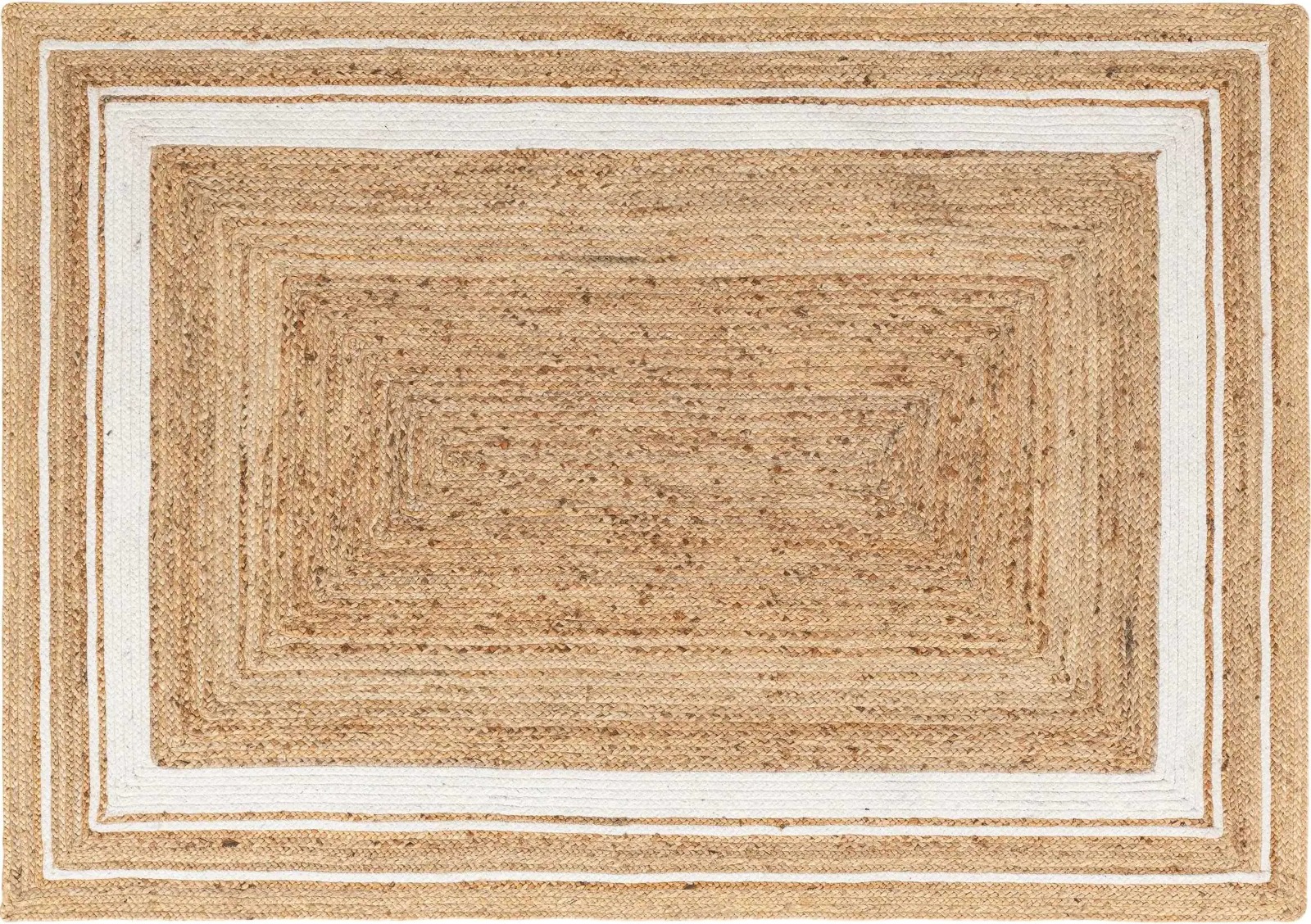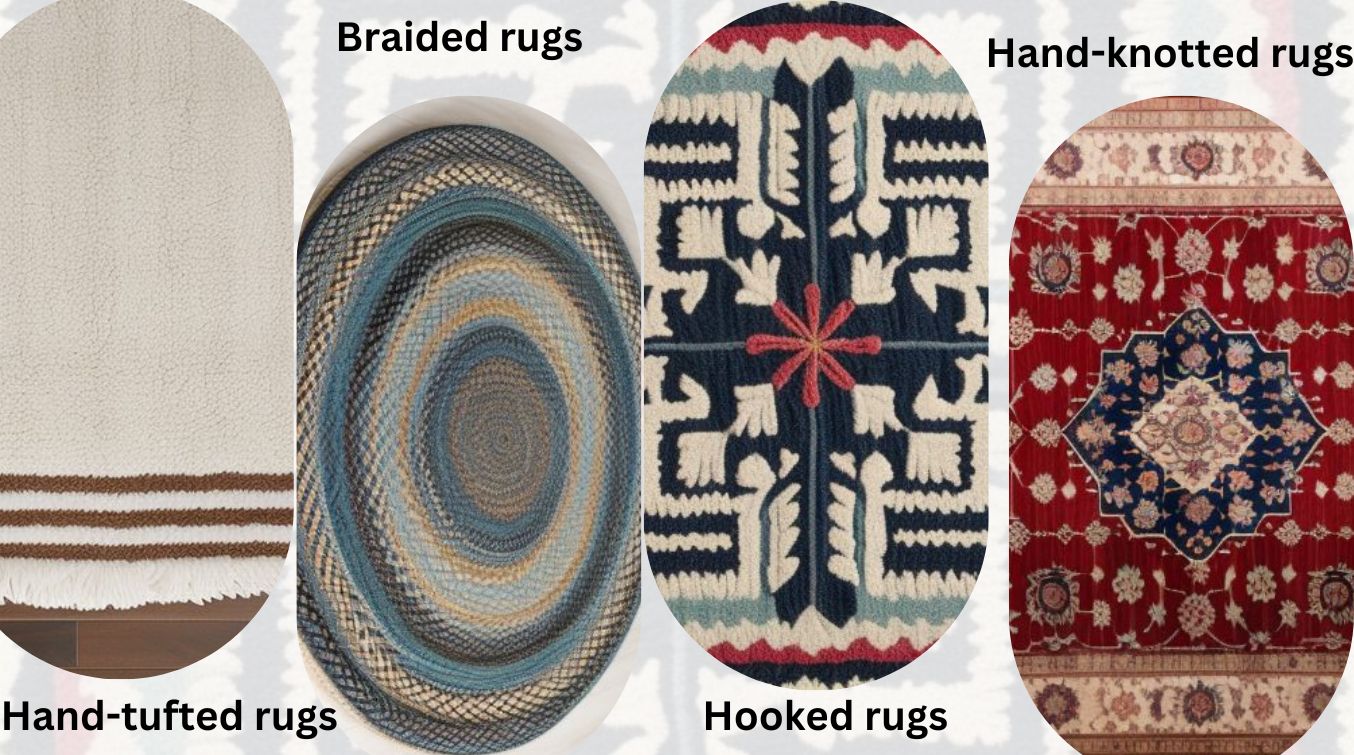
In this blog explores the world of area rugs, a versatile floor covering that can transform a space from mundane to magnificent. It covers understanding their purpose, selecting the perfect rug, and maintaining their beauty over time, highlighting their practical and stylish benefits.
What are area rugs
An area rug is a decorative piece that covers a specific part of a room, providing warmth, style, and personality. Unlike wall-to-wall carpeting, area rugs can define different areas and come in various shapes, textures, patterns, sizes, and colors. These lightweight, portable rugs are easy to transport and pick up from one room to another.
Types of Area Rugs:

There are many types of area rugs available in the market.
1- Hand-knotted rugs: Hand-knotted rugs, known for their intricate designs and high quality, are crafted by hand using thousands of knots. These expensive, intricate rugs, typically made from wool or silk, take months to complete.
2- Hand-tufted rugs: Hand-tufted rugs are made by punching wool or silk strands onto a canvas stretched on a metallic frame, offering a quicker and less expensive option.
3- Flatweave rugs: Flatweave rugs, made by weaving fibers back and forth, are lightweight, easy to move, and less expensive than hand-knotted rugs.
4- Machine-made rugs: Machine-made rugs are affordable and versatile, available in a variety of styles and colors, making them a popular choice over hand-knotted rugs.
5- Hooked rugs: Hooked rugs, typically made from wool, are durable rugs made by pulling yarn loops through a woven backing.
6- Hide rugs: Hide rugs, crafted from animal hides, are renowned for their distinctive texture and pattern, often resulting in high prices.
7- Braided rugs: Braided rugs, typically made from cotton or wool, are durable rugs made by braiding fabric strips together.
8- Outdoor rugs: Outdoor rugs, made from durable synthetic materials, are versatile and come in a variety of styles and colors for outdoor use.
9- Children's rugs: Children's rugs are versatile, easy-to-clean rugs designed for children's rooms, available in various styles and colors.
Materials for Area Rugs:

Area rugs are made from various materials, including common ones like wool, silk, and cotton.
1- Wool: Wool is a popular and durable fiber used in rugs, making it ideal for high-traffic areas due to its resilience and softness. It is water and dirt repellent, and its elastic nature allows it to quickly return to its original shape. Wool rugs come in various pile heights and styles and can be combined with other fibers to reduce costs.
2- Silk: Silk rugs are intricate, high-quality pieces made by tying thousands of knots on top of each other, taking months to complete and typically being expensive due to their intricate designs.
3- Cotton: Cotton rugs are lightweight, easy to move, and less expensive than wool or silk rugs, available in various styles and colors, and are commonly used in casual settings.
4- Jute: Jute rugs, made from natural fibers, are durable and popular in high-traffic areas due to their resistance to wear and tear. Available in various styles and colors, they are also suitable for casual settings.
5- Polypropylene: Polypropylene rugs, made from synthetic fibers, are durable and stain-resistant, popular in high-traffic areas due to their easy cleaning and maintenance. Available in various styles and colors, they are often less expensive than wool or silk rugs.
6- Sisal: Sisal rugs, made from natural fibers, are durable and popular in high-traffic areas due to their resistance to wear and tear. Available in various styles and colors, they are also suitable for casual settings.
Styles and patterns of area rugs
The market offers a variety of area rugs, with some of the most popular styles and patterns being:
1- Geometric rugs: Geometric rugs, featuring patterns like triangles, diamonds, and hexagons, add a modern touch to any room.
2- Floral rugs: Floral rugs are a stylish addition to any room, featuring patterns inspired by flowers and plants, adding a feminine touch.
3- Tribal rugs: Tribal rugs, derived from the art history of ethnic groups, add a rustic touch to any room.
4- Striped: Striped rugs are versatile pieces that showcase a variety of colors and widths, adding a bold touch to any room.
5- Solid rugs: Solid rugs, a single color with no pattern, add a simple and elegant touch to any room.
6- Abstract: Abstract rugs are a contemporary addition to any room, featuring unique patterns and designs that add a touch of elegance.
7- Oriental: Oriental rugs, inspired by traditional Persian and Oriental rugs, offer intricate patterns and designs, adding a luxurious touch to any room.
8- Chevron: Chevron rugs are a playful addition to any room, featuring a zigzag pattern for a stylish touch.
9- Animal Print: Animal Print Rugs, featuring patterns like zebra, leopard, and cheetah, add a wild touch to any room.
Diffract Size of Area Rugs :

The size of an area rug significantly impacts the room's overall effect, with a rug that is too small or too large creating an uninviting or smaller atmosphere.
When purchasing a pre-made patterned rug like Oriental or Persian, consider the standard sizes available, as these area rugs may vary by several inches in size.
- 3 feet by 5 feet
- 4 feet by 6 feet
- The previously standard size of 6 feet by 9 feet has been replaced with a 5 feet by 8 feet size.
- 8 feet by 10 feet
- 9 feet by 12 feet 12.
Custom-made area rugs offer the luxury of being tailored to your exact size, particularly in broadloom, which is particularly beneficial for spaces that require a non-standard size, making it an ideal choice.
The best rug size should be determined based on your furniture configuration, not the room size. Some layouts may require some floor visibility around the room's edge. The main rule for determining the best rug size is to consider furniture placement over room size, especially in living rooms, dining rooms, or bedrooms.
Color selections for area rugs
When selecting an area rug, consider the room's existing decor and the color it sets. Neutral tones or a single color may be suitable for rooms with a lot of color and patterns. If you don't have any existing furnishings, consider how different rug colors will complement the tones of the flooring, walls, and ceiling. The color of your rug sets the tone for the room.
How to do Maintenance and Cleaning Area Rugs

Maintaining and cleaning area rugs is crucial for their appearance and can be achieved by following these tips:
1- Vacuum regularly: Regular vacuuming is crucial for maintaining your rug. Vacuum the back of the rug at least once a month to remove dirt. Use suction on wool rugs' front, and beater bar/rotating brush on synthetic rugs' front and back. Avoid vacuuming fringe or tassels, as they are delicate and can get tangled or ripped. Fluff them by hand. Wool rugs should be vacuumed a few times a month.
2- Rotate the rug: Regularly rotating your area rug can prevent foot traffic patterns from damaging the rug's pattern and fibers. If your furniture is resting on the rug, move it regularly to avoid uneven fading or impressions. Additionally, rotate the rug every other month to even out wear.
3- Roll rugs for moving and storage: Roll rugs tightly to prevent creases and folds, and make it easier to break down, move, and store. Rolling is especially important for steam or dry cleaning, as it prevents creases and folds. Preparing the roll is crucial for efficient transportation and storage.
4- Use diluted white vinegar to restore carpet color and shine: To restore carpet color and shine, mix diluted white vinegar with 1 part water and blot slowly in the direction of the carpet pile. Avoid soaking the carpet, dampen it, and allow it to air dry while avoiding sun exposure to bleach colors.
5- Sprinkle Borax on the rug to remove any insect infestation: Borax is a natural insecticide that naturally degrades insect exoskeletons, destroys larvae and eggs, and removes insect infestations. It should be sprinkled on a rug, left to dry, and vacuumed after 20 minutes, ensuring no pets near the rug can inhale it.
6- Pretreat stains: Pretreat stains with a stain remover and blot with a dry white cloth before washing. Follow the rug's care label for proper wash water temperature.
7- Wash the rug: The rug should be washed outside to loosen embedded dirt, vacuum to remove remaining dirt, and follow the care label for proper water temperature and care for the rug's fibers.







